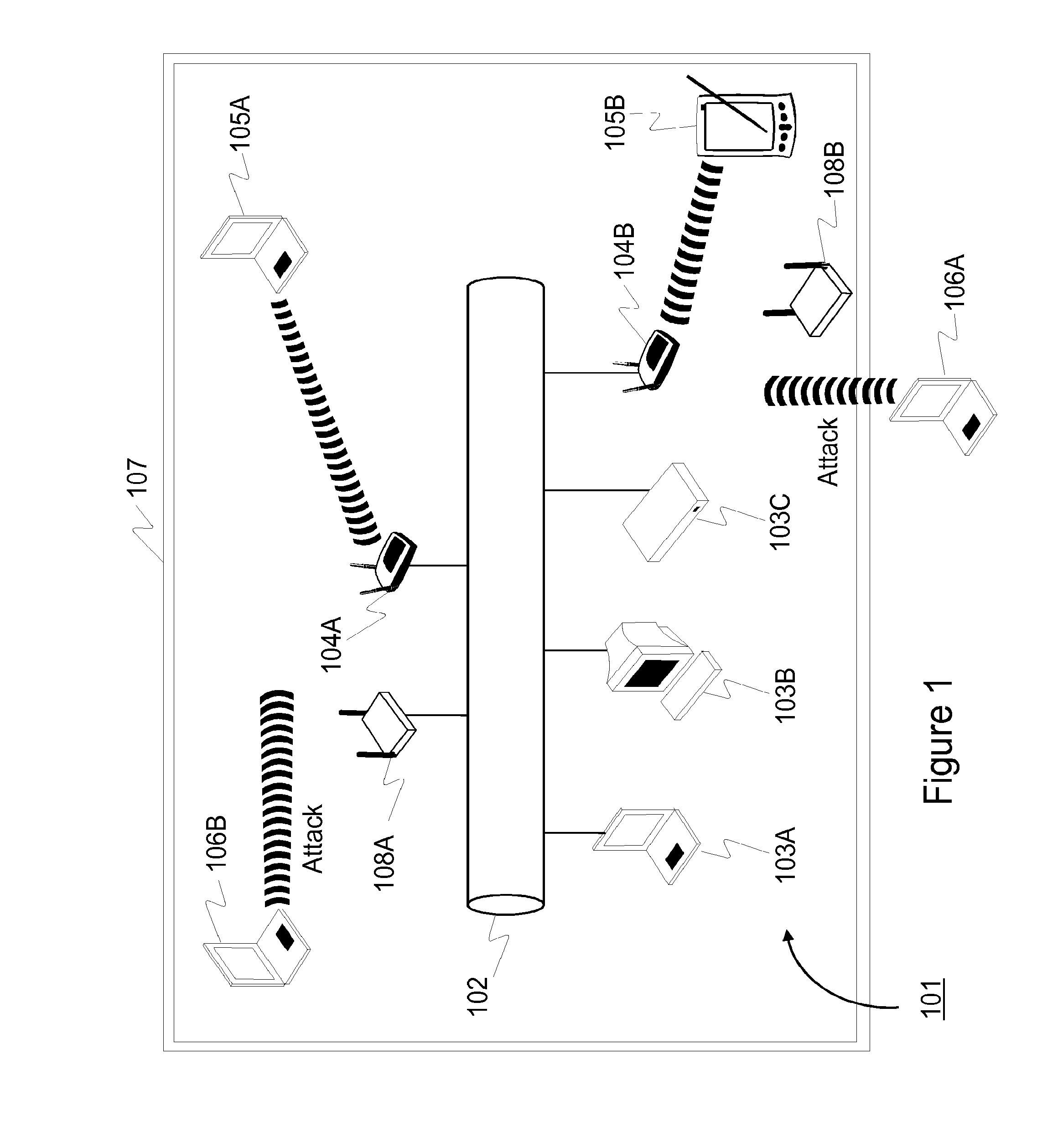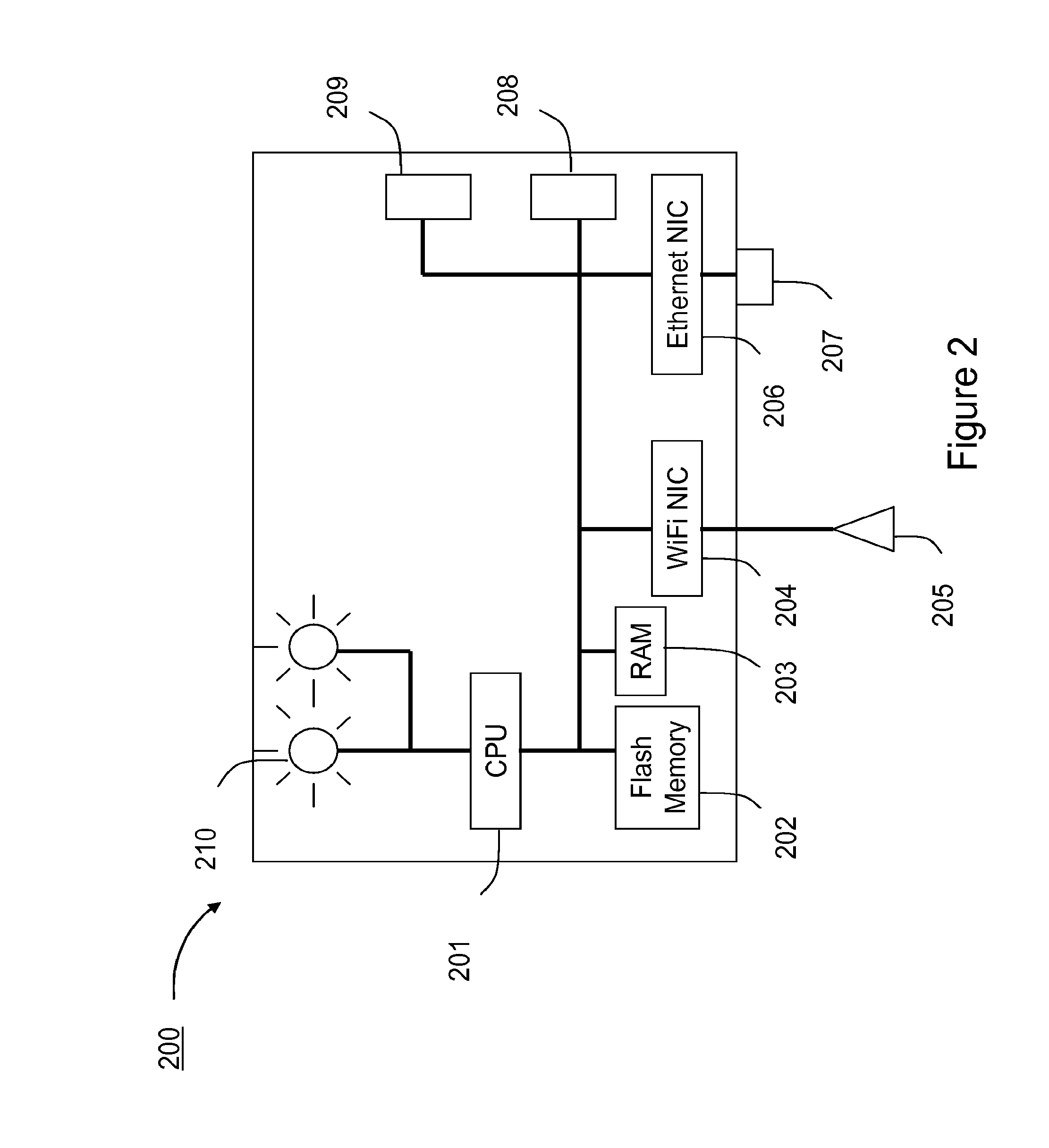Method and system for detecting address rotation and related events in communication networks
a communication network and address rotation technology, applied in the field of computer networking techniques, can solve the problems of launching security easy target of denial of service attacks on wireless networks, and inability to contain radio waves integral to wireless communication inside or outside the physical space bounded by physical structures, etc., and achieve the effect of reducing the number of false alarms produced
- Summary
- Abstract
- Description
- Claims
- Application Information
AI Technical Summary
Benefits of technology
Problems solved by technology
Method used
Image
Examples
Embodiment Construction
[0026]The present invention relates generally to computer networking techniques. More particularly, the invention provides methods and systems for intrusion (attack) detection for local area networks with wireless extensions. The present intrusion detection can be applied to many computer networking environments, e.g. environments based upon the IEEE 802.11 family of standards (WiFi), Ultra Wide Band (UWB), IEEE 802.16 (WiMAX), Bluetooth, and others. In a specific embodiment, the invention provides for reducing false alarms during attack detection.
[0027]The application of wireless communication to computer networking has introduced new security risks. Specifically, the radio waves that are integral to wireless communication often cannot be contained inside or outside the physical space bounded by physical structures, such as the walls of a building. Because of this signal leakage, unauthorized users, who could be using their wireless devices in a nearby street, parking lot, or build...
PUM
 Login to View More
Login to View More Abstract
Description
Claims
Application Information
 Login to View More
Login to View More - R&D
- Intellectual Property
- Life Sciences
- Materials
- Tech Scout
- Unparalleled Data Quality
- Higher Quality Content
- 60% Fewer Hallucinations
Browse by: Latest US Patents, China's latest patents, Technical Efficacy Thesaurus, Application Domain, Technology Topic, Popular Technical Reports.
© 2025 PatSnap. All rights reserved.Legal|Privacy policy|Modern Slavery Act Transparency Statement|Sitemap|About US| Contact US: help@patsnap.com



